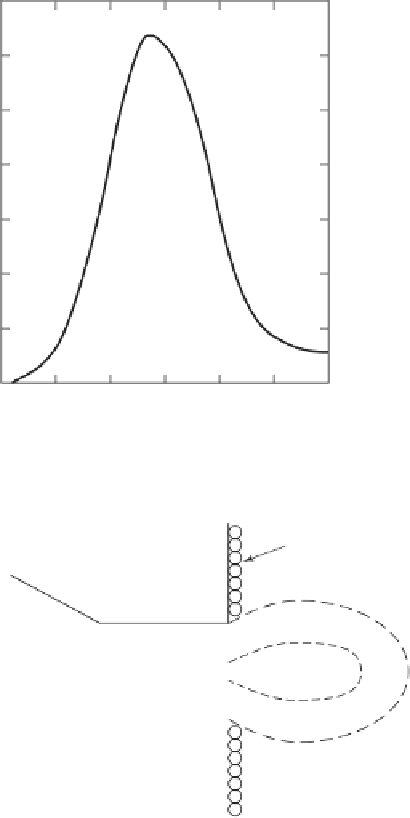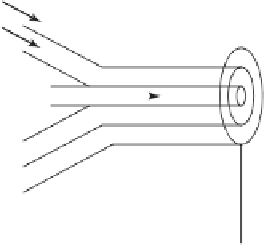Environmental Engineering Reference
In-Depth Information
3500
3000
2500
2000
1500
1000
Stoichiometric
500
10
12
14
16
18
20
22
Fuel-rich
Air/fuel ratio, weight per weight
Fuel-lean
Figure 5.12
Nitric oxide concentrations in flue gas versus air-to-fuel mass ratio.
Water wall
Tertiary air
Secondary air
Fuel-lean
outer flame
Fuel-rich
inner flame
Pulverized coal and
primary air impeller
Figure 5.13
Low-NO
x
burner, schematic.
is presented in Figure 5.12. It is seen that under stoichiometric conditions (air/fuel ratio
15)—
that is, when exactly as much air oxygen is present as necessary for complete combustion of the
fuel—maximum NO
x
is formed. Less NO
x
is formed both under fuel-rich and fuel-lean combus-
tion conditions. (Fuel-rich conditions are to the left in Figure 5.12; fuel-lean conditions are to
the right.)
A schematic of a LNB is presented in Figure 5.13. Fuel (e.g., pulverized coal) and air is
injected through the central annulus of the burner. The air/fuel ratio is less than stoichiometric, that
is, fuel-rich. This produces a luminous flame, with some of the pulverized coal left unburnt, but
also with low NO
x
formation, according to the left-hand side of Figure 5.12. Secondary and tertiary
air arrives through outer annuli, creating an outer flame envelope that is fuel-lean. Here, all the
≈


